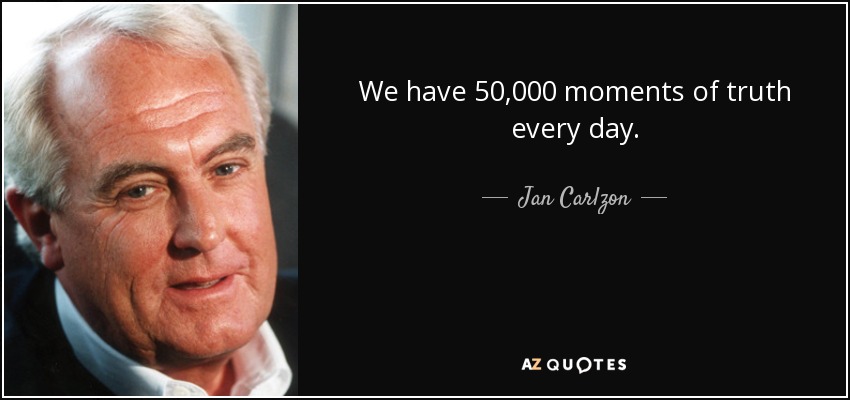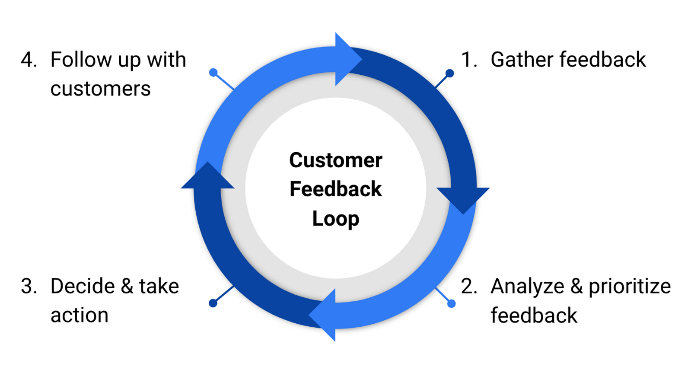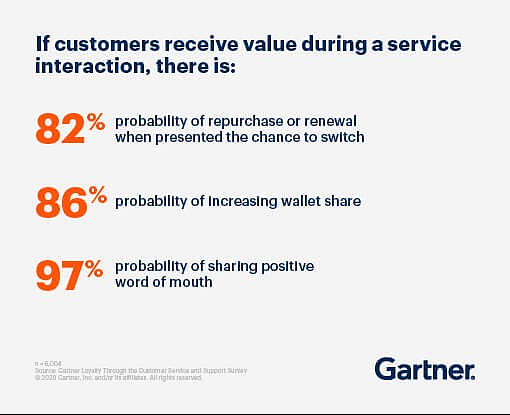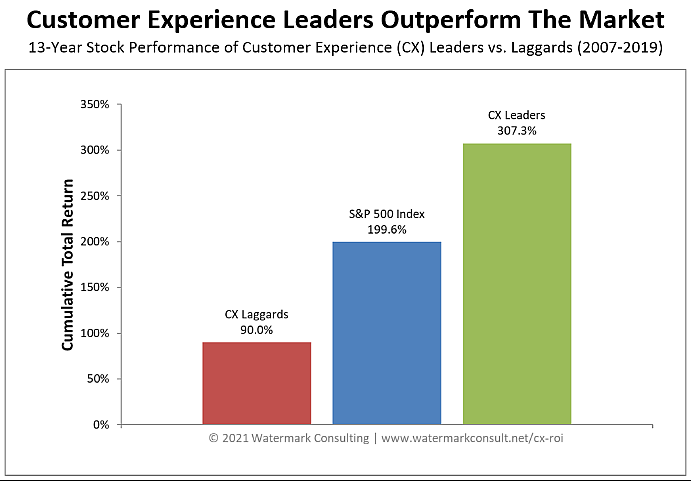Customer Experience
Accredited Consulting Service for Mr. Black Accredited Senior Consultant (ASC)
Executive Summary Video

The Appleton Greene Accredited Consultant Service (ACS) for Customer Experience is provided by Mr. Black and provides clients with four cost-effective and time-effective professional consultant solutions, enabling clients to engage professional support over a sustainable period of time, while being able to manage consultancy costs within a clearly defined monthly budget. All service contracts are for a fixed period of 12 months and are renewable annually by mutual agreement. Services can be upgraded at any time, subject to individual client requirements and consulting service availability. If you would like to place an order for the Appleton Greene Customer Experience service, please click on either the Bronze, Silver, Gold, or Platinum service boxes below in order to access the respective application forms. If you have any questions or would like further information about this service, please CLICK HERE. A detailed information guide for this service is provided below and you can access this guide by scrolling down and clicking on the tabs beneath the service order application forms.
Client Telephone Conference (CTC)
If you have any questions or if you would like to arrange a Client Telephone Conference (CTC) to discuss this particular Unique Consulting Service Proposition (UCSP) in more detail, please CLICK HERE.
Bronze Client Service
Monthly cost: USD $1,500.00
Time limit: 5 hours per month
Contract period: 12 months
SERVICE FEATURES
Bronze service includes:
01. Email support
02. Telephone support
03. Questions & answers
04. Professional advice
05. Communication management
To apply – CLICK HERE

Silver Client Service
Monthly cost: USD $3,000.00
Time limit: 10 hours per month
Contract period: 12 months
SERVICE FEATURES
Bronze service plus
01. Research analysis
02. Management analysis
03. Performance analysis
04. Business process analysis
05. Training analysis
To apply – CLICK HERE
Gold Client Service
Monthly cost: USD $4,500.00
Time limit: 15 hours per month
Contract period: 12 months
SERVICE FEATURES
Bronze/Silver service plus
01. Management interviews
02. Evaluation and assessment
03. Performance improvement
04. Business process improvement
05. Management training
To apply – CLICK HERE
Consultant Profile
Mr. Black is an approved Senior Consultant at Appleton Greene and he has experience in customer service, management, and production. He has achieved a Master of Business Administration and a BSIE in Science-Industrial Engineering. He has industry experience within the following sectors: Construction; Logistics; Transport; Retail and Non-Profit & Charities. He has had commercial experience within the following countries: United States of America and Canada, or more specifically within the following cities: Des Moines IA; Omaha NE; Kansas City MO; Orlando FL and Toronto ON. His personal achievements include: reduced work orders in process; implemented inside sales team; improved customer service quality; implemented Voice of the Customer and increased first call resolution. His service skills incorporate: customer experience; process improvement; project management; P&L management and team leadership.
To request further information about Mr. Black through Appleton Greene, please CLICK HERE
Executive Summary
Service Title
Customer Experience
The service sector of the global economy continues to grow year after year. In 2020, the service sector accounted for nearly two-thirds of the global gross domestic product (GDP). In countries like the United States, the percentage is even higher at three-fourths. As the service sector continues to grow, companies have put a lot of time, money, and effort into improving their level of customer service. Unfortunately, their investments don’t seem to be paying off. As the amount of service-related business increases, the level of customer satisfaction has stayed stagnant or has even decreased. For example, the American Customer Satisfaction Index (ACSI) has identified that customers have become increasingly dissatisfied since 2017. The Q2 2022 survey resulted in the lowest satisfaction since 2005.

This is cause for concern. The service sector is increasing, and companies are focusing more effort on improving customer service, yet their efforts aren’t producing the desired results of increased customer satisfaction. Maybe it’s time to re-evaluate the approach to improving customer service.
The need for improvement is evident. Anecdotal stories and documented research have proven that happy customers continue to purchase, purchase more over time and tell others about the good experiences they have (positive word of mouth WOM). It just makes sense. If a person is happy with the products and services they receive from a company, they will continue to buy those products and services, try new products and services, or buy more products and services. They will also tell others about their good experiences. This equates to the best (and cheapest) form of marketing there is-social proof. Likewise, if customers have a poor experience, they will likely tell many more people about their poor experience and post reviews on several social media sites where WOM can reach thousands of people. Customers who return, buy more, and tell others about their good experiences are loyal customers. Research shows that reducing the customers’ effort to do business with an organization leads to customer loyalty. This research is detailed in the book The Effortless Experience: Conquering the New Battleground for Customer Loyalty by Matthew Dixon, Nick Toman, and Rick DeLisi.

Service Methodology
Customer service is more than just talking nice to customers…the “soft skills” we often hear referred to when customer service is discussed. Customer service is also often referred to as being “common sense”. However, even our own experiences as customers tell us good customer service is not all that common and Customer Satisfaction Scores are proof of that. A 2018 report by New Voice Media estimated that poor customer service is costing companies about $75 billion annually. With customer satisfaction scores continuing to plummet, it only stands to reason that amount only continues to rise. Companies can have a significant impact on customer service by focusing on making it easy for customers to do business and making the experience enjoyable. These two basic principles can look very different among companies and industries. However, they produce the same result-satisfied customers who continue to buy, buy more, and tell others about their good experiences. After being useful, Forrester Research concludes customers want their experiences to be easy and enjoyable.

The journey to improve customer service starts by mapping the customer journey-what the customer experiences when doing business with you. Additionally, identifying what good and poor customer service looks like along this customer journey will help identify areas for improvement. Mapping the customer journey will most surely reveal “Moments of Truth”. This idea was made famous by Jan Carlzon in the 1980s when he was with Scandinavian Airlines. This approach worked then, and it still works today. Carlzon and airline employees focused on those key critical times airline personnel interacted with passengers and implemented changes to improve those interactions. The results were nothing short of amazing. Scandinavian Airlines went from near the bottom in punctuality (rated 14 out of 17 airlines in Europe) in 1981 to being named Airline of the Year in 1983. Additionally, the airlines went from losing $17 million in 1981 to turning a profit of $54 million in 1982. Regardless of the type of business or industry, we all have customers, and we all have Moments of Truth. Focusing on improving those Moments of Truth is a winning strategy. Carlzon’s book details all his work surrounding Moments of Truth.

How does a company improve the Moments of Truth? A robust Voice of the Customer (VoC) system is a great place to start and absolutely necessary to collect customer feedback. Following a simple feedback loop for customer experience can be extremely profitable and it all starts with gathering feedback.

14, Last modified: July, et al. “Voice of Customer: Benefits and 5 Strategies to Improve Your VOC Program.” ProProfs Help Desk Blog, 14 July 2022, https://www.proprofsdesk.com/blog/voice-of-customer/.
Gathering customer feedback for satisfaction, effort, and how likely customers are to promote your business are macro-measures that are important. Digging even deeper and gaining customer insight into those Moment of Truth interactions is where a company can really make a significant difference. Improvements in these Moments of Truth will lead to improvements in Customer Satisfaction, Customer Effort, and Net Promoter Score (NPS). Constantly and consistently collecting customer feedback and connecting the feedback to improve processes, systems, and procedures used by the organization will result in improved customer satisfaction and increased customer loyalty. Once the feedback has been collected, following the remaining steps on the feedback loop will lead to an improved customer experience.
Service Options
Companies can elect whether they just require Appleton Greene for advice and support with the Bronze Client Service, for research and performance analysis with the Silver Client Service, for facilitating departmental workshops with the Gold Client Service, or for complete process planning, development, implementation, management and review, with the Platinum Client Service. Ultimately, there is a service to suit every situation and every budget and clients can elect to either upgrade or downgrade from one service to another as and when required, providing complete flexibility in order to ensure that the right level of support is available over a sustainable period of time, enabling the organization to compensate for any prescriptive or emergent changes relating to: Customer Service; E-business; Finance; Globalization; Human Resources; Information Technology; Legal; Management; Marketing; or Production.
Service Mission
Our service mission is to assist businesses of all sizes to improve the level of service they provide their customers. Improved customer service has proven to increase customer loyalty. Loyal customers continue to buy from companies (repeat customers), buy more products and services over time (increased share of wallet), and tell others about the good experiences they have (positive Word of Mouth). According to Gartner, the likelihood of customers doing these three things is very high if they receive a positive experience.

What does this mean for the bottom line? What’s the return on investing in customer service and experience? After all, that’s what matters, right? Watermark Consulting analyzed companies using data from 2007 to 2019 and determined that customer experience Leaders significantly outperformed their competitors. CX Leaders generated a cumulative return that was 3.4 times greater than the Laggards.

The Leaders experienced revenue growth, reduced expenses, reduced customer churn, increased employee satisfaction, and increased customer loyalty. That’s a significant return on investing in customer service and experience.
Our simple, but effective strategy and process of mapping the customer journey, identifying Moments of Truth, identifying, and implementing improvements, and capturing customer feedback through a Voice of the Customer system has proven to be effective in companies of all sizes. The result is an organization that has satisfied and loyal customers, increased revenue and profits, and reduce operating costs.
Key Issue Addressed
Our service offering addresses the key issues facing companies of all sizes and industries.
How can we differentiate ourselves from our competition?
How can we justify the ROI of investing in customer service and experience?
If customers can’t tell (or experience) the difference between companies, rationally they make a choice mostly based on price. If customers can see and experience the difference in service, price becomes much less of a factor in the decision-making process. In fact, most customers will spend more if they feel valued, and appreciated, and that they are receiving good service. Research exists that found that up to 86% of consumers said they would pay more for better service and a better customer experience. It doesn’t take much. Consistently delivering at the Moments of Truth will lead to a differentiated customer experience.
It also doesn’t require a huge investment. A methodical approach to analyzing and improving the experience at the Moments of Truth, supported by, consistent and recurring training will deliver the expected results of increased customer satisfaction, increased revenue/profit, and reduced operating expenses. As shown earlier, the return on the investment in customer service and experience can lead to significant growth for an organization through differentiated customer service and experience.
Service Objectives

- Customer Feedback
The first step in a customer experience improvement effort is to implement a customer feedback system. Peter Drucker, one of the most widely known and influential business management leaders, is often credited with the phrase “If you can’t measure it, you can’t improve it”. Any effort to improve the customer experience must include key performance indicators (KPIs) that measure the experience an organization is delivering for its customers. Customer experience is the customer’s entire journey with an organization from initial awareness through to post-purchase. Traditional customer experience KPIs include customer satisfaction, customer effort, and Net Promoter Score. These KPIs can provide an overall picture of how customers view their journey with an organization. They describe customers’ level of satisfaction with the organization’s product and/or service; how much effort customers have to put forth to do business with an organization; and how likely customers are to recommend the organization to others. These are important to measure, monitor, and improve. Other KPIs are also important and are often specific to the organization itself. Measuring and collecting customer feedback at milestone interactions along the customer journey provides insight as to specific areas an organization can focus on to improve the customer experience. Focusing on these “moments of truth” was the foundation of the work done by Jan Carlzon with Scandinavian Airlines. By improving these critical points of interaction, an organization can improve the overall customer experience. Examples of “moments of truth” would be when a customer calls to schedule a service call, when the technician arrives to perform the service, and when the customer receives the invoice for the work that was done. Improving each of these key critical interactions improves the overall customer journey. Collecting descriptive customer feedback here is essential for improvement. When customers provide feedback using words like “frustrating”, “didn’t care”, “rude”, and “felt rushed”, the organization should implement solutions to correct the root cause of the problem. When customers provide feedback using words like “cared for”, “important”, and “valued”, organizations should continue to support the processes, procedures, and systems that produce this type of feedback. - Effortless Experience
One of the most important indicators of a person’s intent to repurchase, purchase more, and recommend to others is how easy it is to do business with the organization. The goal of this service objective is to create customer loyalty. According to Gartner research, 96% of customers who had a high-effort experience will become disloyal compared to only 9% who have a low-effort experience. Gartner also found that low-effort interactions reduce costs by decreasing repeat calls, escalations, and channel switching (abandoning on hold on the phone to go to live chat is an example of channel switching). Solving problems quickly and making it easy to reach a representative are ways in which an organization can reduce customer effort. Nobody likes to do business with a company that makes it difficult. When a company makes it difficult, customers will choose another company. Making the experience enjoyable is another factor that contributes to customer loyalty. Soft skills, such as interpersonal communication skills, personality traits, and emotional awareness help to make the customer experience enjoyable. How an organization answers the phone, greets customers, offers to provide additional assistance, and thanks customers for their business are all examples of soft skills. Organizations that have team members that are empathetic, show enthusiasm, listen well, and are friendly often have high levels of customer satisfaction. Providing team members with feedback on soft skills is essential in any customer experience improvement effort. Identifying areas to improve individually and as a team and implementing training and other solutions to address weaknesses will produce a better customer experience. Focusing on making the customer journey easy and enjoyable will lead to a loyal customer following where customers repurchase, purchase more over time and tell others about the great experience they have with the company. - Personalized Experience
The goal of this service objective is to personalize the customer experience which drives customer loyalty. The old saying is true, “People don’t care how much you know until they know how much you care.”. Customers want to know that you know them and care that they are your customers. Personalizing customer interactions make customers feel important and valued and everyone likes to feel important and valued. Having a good customer relationship management (CRM) system that allows team members to have access to customer information is critical. Previous spending, lifetime customer value (LTV), issue history and resolution, and any other important customer information should be readily available to team members assisting customers. All customer interactions should be recorded in the CRM so team members can refer to them in future customer interactions. Tailoring interactions to the customer’s personal preferences and needs demonstrates the organization values them as a customer. Personalization can lead to a more efficient customer experience and drive customer loyalty. - Consistent Experience
The objective of a consistent customer experience is to create customer loyalty and trust. A study by McKinsey & Co found that a consistent customer experience across the entire customer journey will increase satisfaction and build trust and loyalty. Consistency in the customer journey, emotions, and communication are areas an organization should focus on to deliver a consistent customer experience. Consistency in the customer journey requires an organization to have policies, procedures, and guidelines in place to make sure each “moment of truth” is consistent, so customers know what to expect each and every time they interact with the organization. Consistency in emotions uses soft skills training and coaching to build trust and loyalty. It’s important to note that it’s nearly impossible to “go above and beyond” for customers in every interaction. Instead, focus on the basics, do them well, and do them consistently. Consistency in communication is demonstrated by keeping promises. Customers create expectations of the experience they will have with an organization by what messages they receive. Deliver on promises, consistently, across the entire customer journey and customers will continue to do business with the organization and become more loyal. All areas of the organization must be aligned in delivering messages to customers. Mixed messages will lead to customer dissatisfaction. Consistently delivering on your promises contributes to increased customer satisfaction and loyalty and ensures customers will continue to repurchase and refer to others. - Adaptable Experience
While it’s important for the customer experience to be consistent, it is also critical to be flexible and adapt when the interaction requires it. Not every interaction or customer need is going to be the same and not all will follow a policy, procedure, or guideline. Training front-line staff and empowering them to make decisions to resolve issues for customers is very important. Customer dissatisfaction is created when team members are not able to solve a problem or need approval to do so. Responses such as “that’s our policy” and “I’ll need supervisor approval for that” frustrate customers and lead to dissatisfaction. Front-line employees know customers the best. Allowing team members to make decisions, solve problems, and even make exceptions to policies, procedures, and guidelines (when necessary) will help create customer satisfaction and loyalty. Supporting team members to be creative in solving issues when needed also builds their confidence and self-worth. Team members will be engaged, feel valued, and will work even harder to serve customers. Training, giving feedback, and trusting team members to do what is right will create customer trust and loyalty. All levels of the organization should understand that there can be many paths taken to arrive at the desired destination of customer loyalty. Allowing team members to find the right path will create employee satisfaction, customer satisfaction, and customer loyalty.
Testimonials
ASSA ABLOY/record automatic doors
“ASSA ABLOY/record automatic doors is the world leader in automated door products and services. Businesses and organizations of all sizes rely on them to make sure their doors operate properly every day. Mr. Black implemented policies and procedures to improve the level of service provided by service coordinators when scheduling service calls by phone and email. This included a comprehensive system to provide feedback to service coordinators through one-on-one and team coaching. Mr. Black also introduced a service KPI reporting dashboard to increase the visibility of work in process, warranty work orders, and service billing which reduced work order processing time. This created a more positive customer experience through reduced downtime for customers.”
Yellow Transportation/YRC Freight
“Yellow Transportation/YRC Freight is one of the largest transportation and logistics companies in North America. Mr. Black worked in their customer service centers leading both the quality and training teams. While leading these teams, Mr. Black was able to close the loop through the quality assurance process by identifying areas for improvement, partnering with training to address problems, and then measuring results. This led to an increase in first-call resolution that reduced costs while improving customer service and satisfaction. Mr. Black was also able to improve the agent call quality feedback process by creating a cross-functional team to drive process redesign. The redesigned process transformed what was once viewed unfavorably by agents into a more learning and improvement-focused feedback process.”
Ruan Transportation
“Ruan provides transportation and logistics solutions for a variety of customers across the United States. While working with Ruan’s terminal and customer support center, Mr. Black was able to transform a part of the company that was not viewed favorably by both internal and external customers. By improving call forecasts and staff planning, as well as, focusing on call and email quality, Mr. Black was able to reduce call response times, thus positively impacting drivers’ efficiency, customer deliveries, and overall internal and external customer satisfaction. Call service levels were increased by 30% and the average speed to answer was reduced by more than 50%.”
The Waldinger Corporation/TWC Services
“I am pleased to write this letter of recommendation for Mr. Black. I had the pleasure of working with Mr. Black for over three years. During this time, Mr. Black was responsible for developing programs that supported a culture of customer service at TWC Services as well as our sister company The Waldigner Corporation. He implemented and managed methods to track key customer data that enhanced our ability to improve our customers’ experience. He was also instrumental in developing and delivering customer service training throughout the organization. Mr. Black spent a considerable amount of time working to develop our customer service training and later delivering the training to branch offices. Mr. Black is a smart, honest, and hardworking person that takes pride in his work. It is without hesitation that I would recommend him to you.”
Des Moines Winterset Memorials
“Des Moines Winterset Memorials has been central Iowa’s leading memorial designer since 1878 and has served generations of families. As General Manager of the multi-site operation, Mr. Black led the transition after the sale of the company from private ownership to an employee-owned holding company. Mr. Black provided operational leadership by implementing systems and processes that positioned the company for future growth and helped improve the customer experience. He improved supply chain processes that reduced lead times to deliver memorials sooner for families. His vast knowledge of customer service and experience has helped the team members improve the experience delivered for families during a very difficult time by implementing a consultative approach to working with families to design the perfect memorial for their loved ones. ”
More detailed achievements, references and testimonials are confidentially available to clients upon request.
Industries
This service is primarily available to the following industry sectors:

Construction
The construction industry is comprised of companies engaged in the erection, repair, and maintenance of structures, buildings, and roads. Construction projects include the design, planning, financing, and delivery of the structure, building, or road. The demand for construction continues to grow as the global population grows and developing countries experience economic growth. The global market was valued at $7.28 trillion USD in 2021 and is expected to reach $14.41 trillion USD by 2030, a CAGR of 7.3% from 2022 to 2030. Challenges facing the construction market include disruptions in supply chains, fluctuating material prices, inflation, and the shortage of skilled labor to perform the work. These challenges cause delays in project completion and reduced profit margins for construction companies. It also means the price of the projects will increase as companies have to pay workers more as the demand for their skills increases. Companies will also have to pay more for materials and the transportation of the materials to the job site. Many companies are adopting new technologies (virtual design and construction or VDC and Building Information Modeling or BIM) and deploying such techniques as prefabrication and modular construction to mitigate these challenges.

Logistics
Logistics is the management (not just the transport) of the flow of goods from one point to another-the entire supply chain. These goods can be raw materials used in the production of finished products or the finished product themselves. An effective logistics management system minimizes the costs to move goods and delivers the right goods in the correct amount when needed. Advances in technology are helping to minimize costs and improve service. Areas included in logistics are demand forecasting, storage, inspection, packaging, import/export facilitation, insurance, and risk mitigation. The logistics industry is expected to continue to grow over the next several years as the demand for goods grows globally. The global market reached a value of $4.92 trillion USD in 2021 and is expected to reach $6.55 trillion USD by 2027. This represents a 4.7% CAGR from 2022 to 2027. Much of the growth in logistics is driven by the growth in e-commerce and the sourcing and sale of goods and materials from all over the world. A challenge facing the logistics industry is the delays experienced in supply chains due to labor, equipment, and material availability.

Transport
Transport is the physical movement of goods and people from point A to point B by land, air, and ocean. Truck and rail are land transportation methods. Container vessels move goods by ocean. Both cargo and passenger planes are used to move goods by air. Depending on the requirements for delivery time and cost, one or more of these modes of transportation can be used to meet the need. Intermodal transport is the term used when one or more modes of transport are used to move goods. An example would be a container that moves goods from India to the United States on an ocean vessel. Once the ship arrives in port in the USA, the container is transferred to the rail where it moves to a rail yard near its final destination. Finally, a truck delivers the container to its final destination. Like logistics, the transport industry is expected to continue to grow as the demand for goods grows globally. The size of the global market was $6.2 trillion USD in 2020 and is expected to grow at a CAGR of 3.4% to a value of $7.8 trillion USD by 2027. Also like the logistics industry, one challenge facing transport is the delays in the supply chain to due labor, equipment, and material availability. A shortage of truck drivers is expected to continue to be a major challenge as 2.6 million truck driver jobs went unfilled in 2021.
Retail
The retail industry is comprised of companies selling goods and services to end consumers. Retailers typically purchase goods from suppliers, wholesalers, or manufacturers and sell those products to consumers for a profit. The retailer is generally considered the final step in the supply chain system. The retail industry continues to grow as demand for goods and services continues to grow globally. E-commerce continues to fuel the growth in retail as consumers move from purchasing goods from traditional brick and motor stores to online retail purchases. As consumers shift how and where they purchase, retailers must focus their efforts on providing the systems and processes needed to make purchasing experiences easy and enjoyable. Total retail sales are expected to rise from $27.7 trillion USD in 2021 to almost $34 trillion USD by 2026, an annual average increase of 4.3%. The retail industry also faces several challenges. Disruption in supply chains and attracting and retaining staff are the two largest. Others include data security and developing customer loyalty.
Non-Profit and Charities
Nonprofits and charities are organizations that raise funds in order to fulfill a specific mission in areas such as health, education, and cultural and scientific activities. Nonprofit organizations are often called non-governmental organizations or NGOs. These nonprofit organizations are not affiliated with or related to the government. However, an NGO often receives government funding in order to fulfill its mission. Charities do not receive government funding and rely on fundraising and donations to generate the needed funds to carry out the mission. The global NGO and charities market is expected to grow from $329.3 billion USD in 2020 to $457.8 billion USD by 2025, a CAGR of 6.9%. The market is expected to continue to grow to $528.1 billion USD by 2030, a CAGR of 4.9% from 2025 to 2030. Much of the expected growth can be attributed to an increase in corporate social responsibility by for-profit companies. Many for-profit companies are increasing the amount of money they donate to social causes worldwide as they see that many consumers like to do business with companies that support such causes. NGOs and charities will always face the challenges of attracting and retaining both donors and volunteers. Engaging donors and volunteers and communicating the results their donations and time are having in fulfilling the mission are critical for future support. Additionally, securing limited government funding will always be a challenge.
Locations
This service is primarily available within the following locations:

Des Moines, IA
Des Moines serves as the capital of the state of Iowa. The total population of the Des Moines metro area has grown from just over 600,000 people in 2010 to a little more than 700,000 people in 2020. This makes the Des Moines area the fastest-growing major Midwest metro in terms of percentage of population growth. Des Moines was named the 14th best place to live and the 12th most affordable place to live in the United States for 2022-2023 by U.S. News and World Report. Des Moines is known as a large financial services and insurance hub in the United States with companies such as Principal Financial Group, Wells Fargo, Nationwide Mutual Insurance Group, EMC Insurance Companies, Wellmark Blue Cross Blue Shield, and Voya Financial having a significant presence. Des Moines has been named a top location for U.S. insurance companies and the third largest insurance capital in the world. Other companies that have their headquarters in the Des Moines metro include Ruan Transportation, TMC Transportation, Casey’s General Stores, Kum and Go convenience stores, Hy-Vee grocery stores, and Anderson-Erickson Dairy. Within the past few years, Microsoft and Facebook have built several data processing facilities in the Des Moines area. With its location in the middle of the U.S., Des Moines is also considered a prime location for logistics, warehousing, and distribution. The intersections of interstates 80 and 35 provide easy access in all directions. Des Moines boasts a highly educated workforce with high school graduation rates above the national average and nearly half of the population ages 25-64 have an associate degree or higher. The unemployment rate typically is lower than the national average. The unemployment rate in December 2022 was 2.8% compared to the national rate of 3.5%.

Omaha, NE
The Omaha metro area (which includes Council Bluffs, IA) has a population of nearly 1 million people, making it the largest city in Nebraska. The area has seen steady double-digit growth in the population over the past several decades. Omaha is largely considered to have a high quality of life and low cost of living. In 2022, Livability ranked Omaha as the twentieth best city to live in the United States. Additionally, SmartAsset ranked Omaha #3 for first-time homebuyers in 2022. Warren Buffett calls Omaha home and his multinational holding company, Berkshire Hathaway, has its headquarters there. In addition to Berkshire Hathaway, three other fortune 500 companies have their headquarters in Omaha-Union Pacific Railroad, Mutual of Omaha Insurance, and Kiewit Corporation. The unemployment rate in Omaha is typically below the national average. In December 2022, the Omaha unemployment rate was 2.6% compared to the national rate of 3.5%. Omaha is considered to have an educated workforce with approximately thirty-five percent of people ages 22-64 having some college or an associate degree and nearly an 88 percent high school graduation rate. Omaha is home to Creighton University and the University of Nebraska-Omaha. The University of Nebraska-Lincoln is less than an hour’s drive from Omaha. If you’re looking for entertainment, the world-famous Henry Doorly Zoo has been open since 1894 and hosts over 2 million visitors annually. If you’re a fan of baseball, Omaha is host to the college world series which was first held in Omaha in 1950.

Kansas City, MO
The Kansas City metro area’s current population is approximately 2.2 million people. The population has shown a slight increase over the past decade. This makes Kansas City the 31st largest metro area in the United States based on 2021 statistics. Some larger cities included in the metro are Kansas City, Missouri, Kansas City, Kansas, Overland Park, Kansas, Independence, Missouri, Olathe, Kansas, and Lee’s Summit, Missouri. A few of the largest private employers in Kansas City include Cerner Corporation, Honeywell, Burns and McDonnell, Hallmark Cards, Inc., and H&R Block. The leading industries that contribute to Kansas City’s more than $140 billion economy include bioscience/animal health, technology, financial services, transportation/logistics/distribution, and food/beverage. The unemployment rate in Kansas City in December 2022 was lower than the national rate at 2.7% compared to 3.5%. About 88% of the workforce has a high school diploma and approximately 34% of the workforce over the age of 25 has a bachelor’s degree. There are a variety of post-high school education options including the University of Missouri-Kansas City and Johnson County Community College. The National Football League Kansas City Chiefs, Major League Baseball Kansas City Royals, and Major League Soccer Sporting Kanas City call Kansas City home. Kansas City also boasts world-class performing arts and is famous for Kansas City-style barbeque.

Orlando, FL
The Orlando metro is generally considered to include Kissimmee and Sanford and has a population of nearly 2.7 million people. It has experienced rapid growth recently. It was the third fastest-growing metro area in the United States in 2020 behind Austin, Texas, and Raleigh, North Carolina. With nearly 2.7 million people and growing at 1,000 people per week, the Orlando metro currently ranks number 23 on the list of largest metro areas in the United States. The Florida Apartment Association expects the population to continue to grow through 2030 which will cause demand for new housing units. This increase in population will also cause growth in construction and other service industries such as healthcare and hospitality. The largest industries in Orlando include travel and tourism, aerospace and defense, biotechnology, advanced manufacturing, and healthcare. Companies that have their headquarters in the Orlando area include Darden Restaurants, the American Automobile Association (AAA), Universal Orlando Resorts, Tupperware Brands, and Marriott Vacations Worldwide. The Orlando metro had one of the lowest unemployment rates in the United States at 2.3% in December 2022 compared to the national rate of 3.5%. The Orlando area workforce is educated which attracts many companies to the region. Approximately 92% of Orlando area residents have a high school diploma and over 40% of residents over the age of 25 have a bachelor’s degree. The Orlando area is well known for Walt Disney World which attracts millions of vacationers each year and employs over 70,000 people.

Toronto, ON
The Greater Toronto Area (GTA) is the most populated area in Canada with over 6.6 million people. The city of Toronto is listed as the fifth largest city in North America with approximately 2.6 million people. According to the Ontario Ministry of Finance, the GTA is expected to grow to approximately 10 million people by 2046. Most of the growth will be attributed to immigration. Toronto has always played an important role as a destination for immigrants to Canada. The population of Toronto is diverse with more than half of residents being born outside of Canada. Industries seeing growth in Toronto include technology and construction. Companies such as Microsoft, Meta, Facebook, Pinterest, Stripe, and Google have increased their presence and invested in new facilities in the Toronto area. The construction industry has benefited from these companies building new buildings and/or remodeling existing buildings. Companies that have their global headquarters in Toronto include Manulife Financial, Four Seasons Hotels and Resorts, Thomson Reuters, and Nortel. The unemployment rate in Toronto was 6.0% in January 2023, higher than the national rate of 5.0%. According to Invest in Canada, Canada has the most educated workforce in the world with 62% of Canadians aged 25-64 having graduated from post-secondary institutions. An investment in Science, Technology, Engineering and Math (STEM) education by Canada has led to the technology companies mentioned earlier locating their Canadian operations in metropolitan areas like Toronto.
Clients
This service’s current clients or employers include:
Yellow Transportation/YRC Freight
YRC Freight traces its origins to 1924 when A.J. Harrell, an Oklahoma City entrepreneur, founded a bus and taxi service that he named Yellow Cab Transit Co. He shortened the name to Yellow Transit Co. in 1926. Meanwhile, in Akron, Ohio, brothers Galen and Carroll Roush were making transportation industry history of their own, establishing Roadway Express in December 1930. YRC Freight reflects the Yellow Transportation purchase of and subsequent merger with Roadway. Today YRC Freight is the leading transporter of industrial, commercial, and retail goods, specializing in solutions for businesses across North America through a full-service network, advanced information technologies, and proactive customer service. YRC Freight is the largest subsidiary of Yellow with corporate headquarters in Overland Park, Kan. Other Yellow subsidiaries include Reddaway, Holland and New Penn.
 Ruan Transportation
Ruan Transportation
Ruan was founded during a very challenging time. It was 1932 during the Great Depression, and John Ruan was forced to drop out of school when his father passed away, the stock market crashed, and his family lost all their savings and livelihood. Determined to provide for his family, John Ruan traded in the family car to buy a truck and began hauling gravel around Iowa. Ruan Transportation Management Systems was born. Ruan is still a family-owned transportation company today, providing dedicated contract transportation, logistics management, and warehouse management solutions to customers across the country. With more than 86 years of transportation experience, Ruan is one of the top 10 privately owned transportation service companies in the country. The company operates in 48 states and has more than 300 locations nationwide, 4,000 power units, 10,000 trailers, and 5,500 team members.
Record Automatic Doors/ASSA ABLOY
Record North America manufactures and supplies industry leading pedestrian automatic doors and entrance solutions. Installation and service are provided through our extensive network of authorized distributors. In addition, we are known for a wide range of products — automatic sliding, swing, bi-folding, ICU, security, and telescopic doors; quality and precision engineering; innovation and design in manufacturing; and a customer service-oriented team dedicated to our distributor partners and end-users. We are part of the Record Group, which has subsidiaries in 13 countries including Australia, Canada, China, Germany, Denmark, Spain, France, Great Britain, Malaysia, Poland, Switzerland, Sweden, United States, and Turkey. In 2020, ASSA ABLOY acquired the Record Group.
https://www.recorddoors.com/us/en
 The Waldinger Corporation
The Waldinger Corporation
Harry Waldinger, a 30-year-old Austrian tinsmith, founded our company as Capital City Tin Shop in 1906. He immigrated to the United States four years before that, having to leave his wife and young children behind. By doing furnace repairs and spouting work, he soon saved enough money to bring his family to the United States. Today Waldinger is a premier full-service mechanical, electrical and sheet metal contractor. Waldinger designs, fabricates, installs, maintains, and repairs HVAC, refrigeration, electrical, plumbing, piping, and kitchen equipment systems for commercial, institutional, and industrial facility customers. Employing more than 3,400 professionals (2,500 of which are trade), annual revenues are over $750 million.
Des Moines Winterset Memorials
Des Moines Winterset Memorials is proud to be a small, employee-owned company that continues to serve generations of families across Central Iowa. Des Moines Winterset Memorials stands behind their work with a perpetual warranty that guarantees that your family’s memorial will last forever. Each monument is hand-crafted by experts in the historic workshop in Winterset, IA, using tried and true materials and techniques that will withstand the test of time. Des Moines Winterset memorialists are dedicated to helping you create the perfect memorial to honor you, your loved one, your family, or your pet. They will be with you every step of the way, from starting the concept to the final installation, no matter your budget or needs. Des Moines Winterset Memorials believes everyone’s story deserves to be written in stone. Des Moines Winterset Memorials is a subsidiary of Rayser Holdings, Inc. Based out of Cedar Rapids, IA, Rayser Holdings is an employee-owned holding company that was founded in 2018. Des Moines Winterset Memorials stands beside CarePro Health Services, KELTEK Incorporated, and J-TEC Associates to form the Rayser employee-owned community.
Service Benefits
Customer Service
- Increased satisfaction
- Reduced effort
- Increased NPS
- Reduced complaints
- Increased loyalty
- Reduced callbacks
- Competitive advantage
- Industry leader
- Increased morale
- Increased engagement
Management
- Employee satisfaction
- Premium pricing
- Reduced expenses
- Reduced turnover
- Increased revenue
- Increased profit
- Company growth
- Reduced recruiting
- Reduced training
- More jobs
Marketing
- Reduced churn
- Increased referrals
- Customer spend
- Lifetime value
- Social proof
- Market share
- Preferred employer
- Improved reputation
- Increased conversions
- Positive media
Bronze Service

Time limit: 5 hours per month
Contract period: 12 months
Bronze service includes:
01. Email support
02. Telephone support
03. Questions & answers
04. Professional advice
05. Communication management
SERVICE DESCRIPTION
The Bronze Client Service (BCS) for Customer Experience provides clients with an entry level option and enables client contacts to become personally acquainted with Mr. Black over a sustainable period of time. We suggest that clients allocate up to a maximum of 5 Key Employees for this service. Your Key Employees can then contact the consultant via email, whenever they feel that they need specific advice or support in relation to the consultant’s specialist subject. The consultant will also be proactive about opening and maintaining communications with your Key Employees. Your Key Employees can list and number any questions that they would like to ask and they will then receive specific answers to each and every query that they may have. Your Key Employees can then retain these communications on file for future reference. General support inquiries will usually receive replies within 48 hours, but please allow a period of up to 10 business days during busy periods. The Bronze Client Service (BCS) enables your Key Employees to get to know their designated Appleton Greene consultant and to benefit from the consultant’s specialist skills, knowledge and experience.
Silver Service

Time limit: 10 hours per month
Contract period: 12 months
Bronze service plus
01. Research analysis
02. Management analysis
03. Performance analysis
04. Business process analysis
05. Training analysis
SERVICE DESCRIPTION
The Silver Client Service (SCS) for Customer Experience provides more time for research and development. If you require Mr. Black to undertake research on your behalf, or on behalf of your Key Employees, then this would understandably require more time and the Silver Client Service (SCS) accommodates this. For example, you may want your consultant to undertake some research into your management, performance, business, or training processes, with a view towards providing an independent analysis and recommendations for improvement. If any research and development, or business analysis is required, then the Silver Client Service (SCS) is for you.
Gold Service

Time limit: 15 hours per month
Contract period: 12 months
Bronze/Silver service plus
01. Management interviews
02. Evaluation and assessment
03. Performance improvement
04. Business process improvement
05. Management training
SERVICE DESCRIPTION
The Gold Client Service (GCS) for Customer Experience is intended for more detailed evaluation and assessment, that may require your Key Employees to have monthly meetings or interviews with Mr. Black. These meetings and interviews can be conducted over the telephone, Skype, or by video conference if required. The consultant can also attend your business premises, an Appleton Greene office, or another mutually beneficial location, but please note that clients are responsible for the costs of any disbursements separately, including travel and accommodation. This service enables you to integrate the specific skills, knowledge and experience of your designated consultant into your Key Employee management team. The Gold Client Service (GCS) can also incorporate training workshops, business presentations and external meetings with customers, suppliers, associations, or any other business-related stakeholders.
Platinum Service

Time limit: 20 hours per month
Contract period: 12 months
Bronze/Silver/Gold service plus
01. Project planning
02. Project development
03. Project implementation
04. Project management
05. Project review
SERVICE DESCRIPTION
The Platinum Client Service (PCS) for Customer Experience is our flagship service and will be required if you need Mr. Black to facilitate the planning, development, implementation, management, or review of a particular project relating to his specialist subject, which would obviously require more time and dedication. This service enables you to reserve up to 12.5% of the consultant’s working month and provides a more hands-on service as and when required. If you need more time than this, then this can always be arranged, subject of course to the consultant’s ongoing availability. The benefit of having an external consultant involved in projects is they provide an independent perspective and are not influenced by internal politics, day-to-day responsibilities, or personal career interest. They provide objectivity, specific knowledge, skills and experience and will be entirely focused upon the tasks at hand. The Platinum Client Service (PCS) will provide your organization with a valuable resource as and when you need it.
























